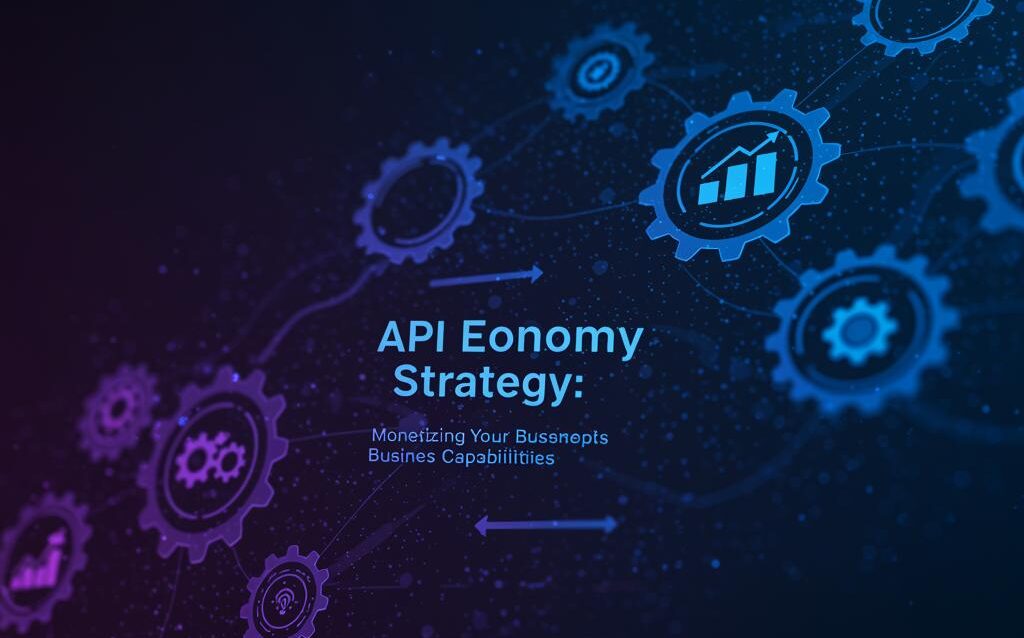API Economy Strategy: Monetize Your Business Capabilities
API Economy Strategy: Monetizing Your Business Capabilities
In today’s digital landscape, the API (Application Programming Interface) economy is rapidly transforming how businesses operate and generate revenue. It’s no longer just about internal system integration; it’s about exposing your core business capabilities as services, allowing external developers and partners to build innovative applications and solutions on top of your infrastructure. This blog post will delve into the intricacies of crafting an effective API economy strategy to monetize your business capabilities and unlock new revenue streams.
Understanding the API Economy and its Benefits
What Exactly is the API Economy?
The API economy refers to the economic value created by using APIs to connect businesses, applications, and data. Think of APIs as digital building blocks. They allow different software systems to communicate with each other, exchange data, and execute functionalities without needing to know the underlying implementation details. This connectivity fosters innovation, collaboration, and new business models.
Benefits of Embracing an API-First Approach
- New Revenue Streams: Monetize your core business functionalities by offering them as API services.
- Expanded Reach: Reach new customer segments and markets by enabling third-party developers to build applications that leverage your APIs.
- Increased Innovation: Encourage external developers to create innovative solutions that you might not have considered internally.
- Improved Customer Experience: Provide seamless integration with other services, enhancing the overall customer experience.
- Enhanced Brand Awareness: Increase brand visibility and recognition as your APIs are used in a wider range of applications.
Developing Your API Monetization Strategy
Identifying Monetizable Assets
The first step is to identify which of your existing business capabilities can be exposed as APIs and monetized. Consider your core competencies, unique data assets, and established processes. Ask yourself: what valuable functionalities do you offer that others would be willing to pay for? Examples could include:
- Data APIs: Providing access to valuable datasets, such as market research, financial data, or geographic information.
- Functional APIs: Exposing core business processes, such as payment processing, shipping calculations, or customer authentication.
- Content APIs: Offering access to content libraries, such as articles, images, or videos.
Choosing the Right Monetization Model
Selecting the appropriate monetization model is crucial for success. Here are some common options:
- Pay-as-you-go: Charge users based on the number of API calls they make. This is a flexible option suitable for a wide range of use cases.
- Subscription-based: Offer different tiers of access with varying features and usage limits. This provides predictable revenue and caters to different user needs.
- Freemium: Provide a limited free tier to attract users and then charge for premium features or higher usage limits.
- Revenue Sharing: Partner with developers and share revenue generated from applications that use your APIs.
Pricing Considerations
Pricing your APIs effectively requires careful consideration. Factors to consider include:
- Cost of infrastructure: Ensure your pricing covers the cost of maintaining your API infrastructure.
- Market rates: Research the pricing of similar APIs offered by competitors.
- Value proposition: Price your APIs based on the value they provide to users.
- Usage patterns: Analyze usage patterns to identify optimal pricing tiers.
Building and Managing Your APIs
API Design Principles
A well-designed API is essential for developer adoption and long-term success. Follow these principles:
- RESTful Architecture: Adhere to RESTful principles for simplicity and scalability.
- Clear Documentation: Provide comprehensive and easy-to-understand documentation.
- Consistent Naming Conventions: Use consistent naming conventions for endpoints, parameters, and data structures.
- Security: Implement robust security measures to protect your APIs and data.
- Versioning: Use API versioning to manage changes and avoid breaking existing integrations.
API Management Platform
An API management platform is crucial for managing, securing, and monitoring your APIs. Key features include:
- API Gateway: Handles authentication, authorization, and traffic management.
- Developer Portal: Provides documentation, tutorials, and API keys for developers.
- Analytics: Tracks API usage, performance, and errors.
- Security Features: Protects APIs from unauthorized access and attacks.
Ensuring API Security
API security is paramount. Implement these measures:
- Authentication: Verify the identity of users and applications accessing your APIs.
- Authorization: Control access to specific resources based on user roles and permissions.
- Rate Limiting: Prevent abuse and ensure fair usage by limiting the number of API calls per user.
- Input Validation: Validate all input data to prevent injection attacks.
- Encryption: Use encryption to protect sensitive data in transit and at rest.
Marketing and Promoting Your APIs
Reaching Your Target Audience
Effective marketing is essential for attracting developers and driving API adoption. Consider these strategies:
- Developer Portal: Create a comprehensive developer portal with clear documentation, tutorials, and code samples.
- Community Engagement: Participate in online forums, conferences, and hackathons to connect with developers.
- Social Media: Use social media to promote your APIs and share updates.
- Content Marketing: Create blog posts, articles, and case studies that showcase the value of your APIs.
Building a Strong Developer Community
A strong developer community can be a valuable asset. Foster a sense of community by:
- Providing Support: Offer responsive support to developers who are using your APIs.
- Gathering Feedback: Solicit feedback from developers to improve your APIs.
- Recognizing Contributions: Acknowledge and reward developers who make significant contributions to your API ecosystem.
Conclusion
Embracing the API economy can unlock significant opportunities for businesses to monetize their capabilities, expand their reach, and drive innovation. By carefully developing a well-defined strategy, building robust APIs, and effectively marketing them to the right audience, you can create a thriving API ecosystem that generates substantial revenue and strengthens your competitive advantage. Remember to prioritize security, user experience, and continuous improvement to ensure long-term success in the dynamic world of APIs.

